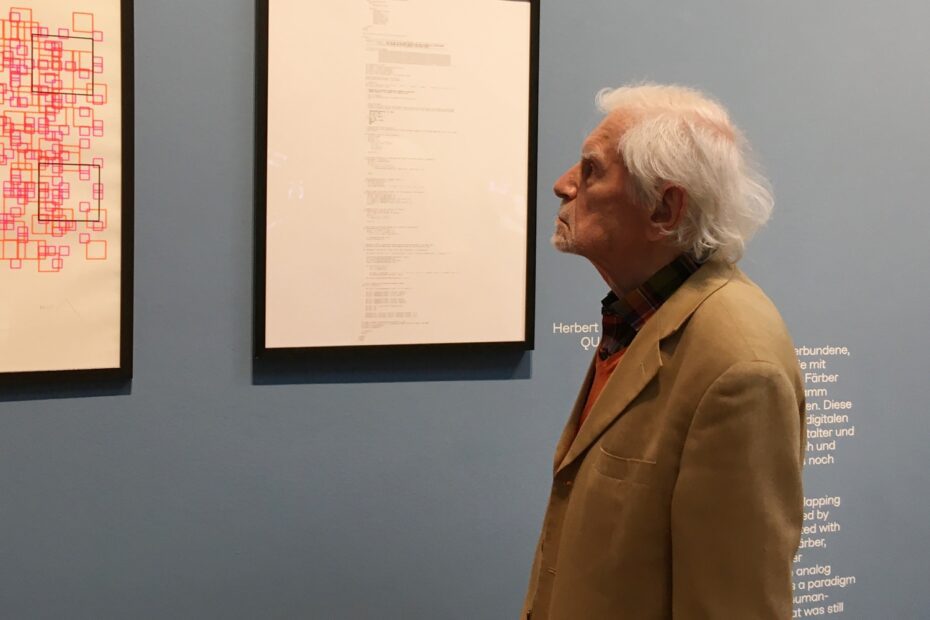+++ Premiere: Herbert W. Franke enters the world of Crypto Art as the first pioneer of computer art from the sixties
+++ Perspective: In the exhibition „Proof of Art“ in Linz, the reconstructed program code of the work „Squares“ with the certificate of authenticity for the network–the „token“–is shown
+++ Progression: The classic „Squares“ of the sixties have now become the crypto-suitable „Non-Fungible Squares“ of the 21st century
On June 10th, the Media Museum in Linz, Upper Austria, opened Proof of Art, an unusual exhibition that is the world’s first museum presentation of crypto art. It is dedicated to the most modern version of digital art, also known as NFT art. NFT stands for „non-fungible token,“ which is a non-exchangeable, therefore unique cryptographic certificate that makes it possible to transform previously arbitrarily replicable digital works into unique pieces.
Francisco Carolinum Linz
Linz | Austria
June 11th – September 15th 2021
The history of this crypto art is only a few years old and mainly characterized by young artists who have grown up in the world of social media. A side effect of the new hype surrounding digital art is that algorithmic art and its precursors have finally become a much-noticed factor in the visual arts.




Today, Crypto Art is characterized by artists who have grown up with the network world. Pioneers of this art movement from the sixties, with their historical works, were not previously to be found among the representatives of Crypto Art. Now, for the first time worldwide, early computer art has been presented in an NFT-compatible way in this exhibition with Squares by Herbert W. Franke from 1967/69 alongside the works of young NFT artists.
In his opening speech, Prof. Dr. Alfred Weidinger, the director of the Linz museums, emphasized the importance of Franke for algorithmic art, who was already generating images with analogue computers in the 1950s and even then described the vision of the machine as the „partner of the artist“. Franke’s extensive archive is currently being built up at the ZKM | Center for Art and Media Karlsruhe. Whereas in classical painting only the artistic manifestation can be shown in a realized work, NFT now offers not only the possibility of putting individual works such as images or videos certified on the net, but also the entire code of a work.


The algorithmic program thus provides a much more far-reaching insight into the creator’s world of thought and artistic intentions. But although computer art is only a few decades old, art historians are already coming up against technological limits when it comes to preserving such early algorithms. This is because the programming languages used at the time, such as Fortran, have long since fallen into disuse–as have the computers on which they were created. Old codes of digital art are therefore „lost“ for posterity for the time being. At the suggestion of the ZKM | Center for Art and Media Karlsruhe, the algorithm of Squares has now been reconstructed by computer scientist Daniel Heiss in an elaborate research project and has now been recoded in such a way that it can be used for NFT technology on the Internet.
Franke, who celebrated his 94th birthday a few weeks ago, is enthusiastic about this innovative implementation of the early code. „For me, algorithms have always been the essential element of my work, not so much the individual image generated with them. So I’m very happy that the ZKM has given me the opportunity to tap into NFT technology right away by reconstructing the algorithm of my first digital work.“ For this, even the old Fortran random number generator from 1970 was „dug up“ again and integrated into the code. And then there’s a little extra in the reloaded version for the 21st century: Franke has designed 20 three-way palettes for it, in which the squares can now even be visualized in different color coding.

